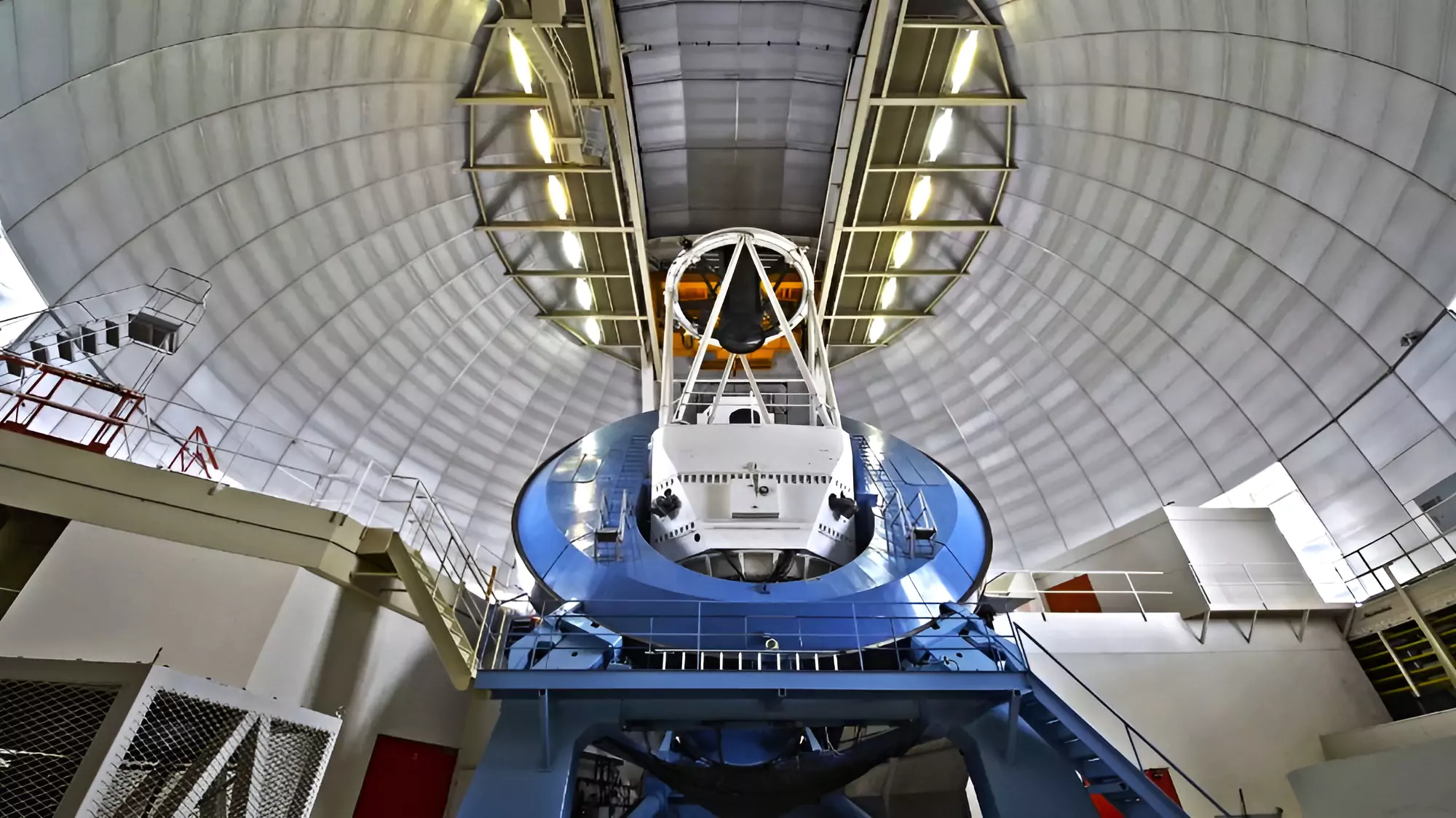Context
An international team of researchers released the most comprehensive “three-dimensional” map of the universe.
- Findings from the first year of observations by the DESI: The findings from the first year of observations by the Dark Energy Spectroscopic Instrument (DESI) have been published.
Key Findings From Observations
- Preparation of Detailed Map of Universe: Using Dark Energy Spectroscopic Instrument (DESI) researchers have been able to measure light from six million galaxies to prepare the most detailed map of the universe yet with very precise information about the distances between these galaxies.
- The distances between these galaxies have been measured with a very high degree of accuracy. Thus, it is called a three-dimensional map.
- Knowing the precise distances of the galaxies is crucial because that allows us to calculate the expansion rate of the universe.
 Mapping of the Distribution and Movement of these Galaxies: The precise distances calculated have resulted in the mapping of the distribution and movement of these galaxies over time.
Mapping of the Distribution and Movement of these Galaxies: The precise distances calculated have resulted in the mapping of the distribution and movement of these galaxies over time.-
- This has been done by comparing the data with similar data for some of the galaxies obtained through other experiments.
- Measurement of the Expansion Rate of the Universe: The dark energy spectroscopic instrument collaboration has measured that the expansion rate of the universe was increasing by 68.5 km per second after every 3.26 million light years of distance, defined as megaparsec.
- Through these precise measurements, the scientists have found that some of the calculated values are not consistent with current well-established theoretical models, which otherwise describe the universe very well.
- Change in Energy Density: The results from dark energy spectroscopic instrument suggest that there are changes in energy density in contrast to the theoretical models.
- The theoretical models suggest that the energy density of dark energy, or the amount of dark energy contained in any volume of space, remains constant even under expansion.
- In these theoretical models, a change in energy density would make the universe unstable.
- Significance: Scientists expect that this could reveal some clues about dark energy.
Enroll now for UPSC Online Course
Dark Energy Spectroscopic Instrument (DESI)
- About: Dark Energy Spectroscopic Instrument (DESI) is a unique piece of equipment that, once fitted over a telescope, can capture light from 5,000 galaxies at the same time. It is mounted over the Mayall 4-Meter Telescope in Arizona, United States.
- Scheduled Operation: It is scheduled to run for five years. On March 31, DESI completed three years of operations.
- Joint Collaboration: DESI is a collaboration of more than 900 researchers in institutions across the world. From India, TIFR is the only participating institution.

The Hypothesis of Dark Energy
- About: Dark energy is the mysterious force that is believed to be causing the universe to expand uncontrollably.
- Expanding Universe: The hypothesis comes mainly from the observed phenomenon of the universe expanding at a rapid rate.
- The vast empty spaces between stars and galaxies have been measured to be expanding at an accelerating pace, despite the countervailing force of gravitation that has the effect of pulling things together.
- Scientists have been unable to find any explanation for this rapid expansion, and have been forced to hypothesize that there must be some “dark” energy causing this expansion.
- Significance: Understanding the nature of dark energy can offer key insights into the origin and evolution of the universe, as well as its eventual fate.
- It can reveal new fundamental forces at work, and could unravel our entire knowledge of the physical world.
Enroll now for UPSC Online Classes
Dark Energy Vs Dark Matter
- Composition of the Universe: Dark energy accounts for roughly 68 percent of the universe’s total mass and energy. Dark matter makes up 27 percent.
- The rest i.e., around 5 percent is all the regular matter we see and interact with every day.
- Dark matter: It makes up most of the mass of galaxies and galaxy clusters, and is responsible for the way galaxies are organized on grand scales.
- Dark energy: It is the mysterious influence driving the accelerated expansion of the universe.
- While dark matter attracts and holds galaxies together, dark energy repels and causes the expansion of our universe.
- Interaction with Gravity: Dark matter does interact with gravity, but it doesn’t reflect, absorb, or emit light. On the other hand, dark energy is a repulsive force — a sort of anti-gravity that drives the universe’s ever-accelerating expansion.
Also Read: SPACE & SPACE TECHNOLOGY
![]() 11 Apr 2024
11 Apr 2024
 Mapping of the Distribution and Movement of these Galaxies: The precise distances calculated have resulted in the mapping of the distribution and movement of these galaxies over time.
Mapping of the Distribution and Movement of these Galaxies: The precise distances calculated have resulted in the mapping of the distribution and movement of these galaxies over time.